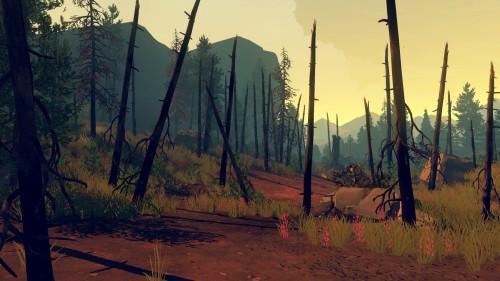

She asks you to hike to the comm line and inspect it for damage. I loved my hat collection, and I kept a mental note of book titles hoping I could piece together the mystery through clues, but not until it was over did they all feel significant.The next day, Delilah calls to let you know that the line connecting the lookouts to the outside world has been knocked out. It brings this richness to the experience that even details so small can bring so much joy. There are numerous hats that you can wear, though the game is first person so you can never really appreciate Henry exploring in a ‘Nam hat. There are books scattered all over the game and many players collected them and arranged them on shelves. There is an aspect of Firewatch that I never appreciated until reading around on forums and watching interviews, it was that people were able to find their own fun with it. Similar to a good book or film, let this story have an impact and maybe don’t expect to pick it up again for a long time. While that may be true, it in no way detracts from the first time playing and short of playing the game again the very next day, I doubt anyone could really notice. The dialogue choices can be very meaningful in the moment, but on a second playthrough it becomes apparent that the conversations are ‘on rails’. The ending left something to be desired and the game has a rather low replay value. It feels authentic to the point that I have trouble believing Shoshone National Forest was not exactly recreated down to the last pine-cone. Much of your exploration is assisted by a map and compass, which just add so much. All throughout is an atmosphere of solitude, but rarely loneliness.

The trees and lake are breathtaking, the mountain views are glorious, and even the burn paths are like nothing you’ve ever seen. Related: The Raven: Legacy of a Master Thief - Charming, Roguish, and Untrustworthy The pacing is superb and the way that you experience it draws you in deep. A few teenage girls pestering Henry have now gone missing, a shadowy figure has been spotted observing Henry, and a bizarre chain-link fence shrouds an uncharted region of the forest, all with the backdrop of tremendous forest fires.

It follows his complex relationship with his supervisor (and walkie-talkie buddy), Delilah, and their ‘investigation’ into possible disappearances in the forest. The story of Firewatch is about Henry, a middle-aged volunteer fire lookout, as he keeps watch at the Shoshone National Forest. While opinions about them and their relevance are divisive, Firewatch is a shining example of what interactive storytelling can aspire to and what ‘walking simulators’ can hope to be. Gone Home served as a harbinger of these style of games and since its debut in 2013 they have thoroughly penetrated the gaming community. You have free roam of a forest and mountainside, a ‘choose your own conversation’ radio chat, and a harrowing cave barred by a padlocked gate with a missing key, all of the makings of a great experience.ĭespite all it has going for it, Firewatch is unfairly lumped into the burgeoning genre of games known (with a negative connotation) as walking simulators.

Firewatch is a beautiful slice of life title that expertly blends together exploration, light role-playing, and mystery.


 0 kommentar(er)
0 kommentar(er)
